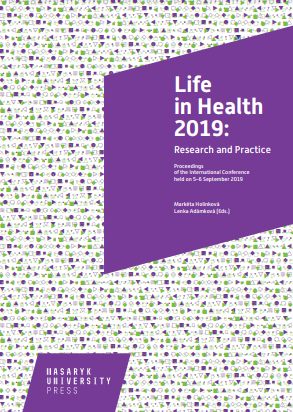Monitoring of Selected Physiological Parameters of Athletes during Sports Leads (Rhabdomyolysis, Hyponatremia, Upper Respiratory Tract Infection, Hepatocyte Damage)
Monitoring of Selected Physiological Parameters of Athletes during Sports Leads (Rhabdomyolysis, Hyponatremia, Upper Respiratory Tract Infection, Hepatocyte Damage)
Author(s): Alena Žákovská, Daniela Chlíbková
Subject(s): Health and medicine and law, Sports Studies
Published by: Masarykova univerzita nakladatelství
Keywords: URTI; rhabdomyolysis; hyponatremia; liver damage; ultra runners; ultra cyclists;
Summary/Abstract: This thesis deals with ultra-endurance events, number of which raised over the last decade and that became very popular. There are not many scientific papers published concerning the influence of ultra-endurance exercise on human health. Therefore, objective of the study was to monitor ultra-endurance athletes in order to define the influence of strenous exercise on selected diagnostic markers. Selected physiological markers are connected to adverse effects of strenous exercise – rhabdomyolysis, hyponatremia, upper respiratory tract infections and liver damage. Tested subjects (total number of 116 athletes) were ultra-runners and ultra-cyclists who participated in 24-hour races and multi-stage races. Blood samples were obtained from cubital vein and following markers were analysed: Blood samples were obtained to determine leukocrit. From plasma pre- and post-race CK, [Na+ ], [K+ ], and urine creatinine and from sera LDH and ALT enzymes and immunoglobulins levels were measured by spectrophotometric method using assay kits. Creatine kinase levels increased after the race (2.9 ± 1.7 to 38.7 ± 78.9 µkat/l, p << 0.01), which refer to possible muscle damage. This was supported by increased potassium levels (pre-race 4.4 ± 1.2; post-race 5.0 ± 0.8 mmol/l, p = 0.19). Based on increase in post-race white blood cell counts (pre-race 5.6 ± 1.6, post-race 10.2 ± 3.3 x109 /l, p << 0,01) and decrease in serum immunoglobulin A levels (156.0 ± 35.1 vs. 148.8 ± 34.2 mg/dl, p << 0.01), we confirm the hypothesis concerning post-race immunosupression. Decreased immunoglobulin M levels (pre-race 169.4 ± 85.9; post-race 150.5 ± 76.9 mg/dl, p << 0.01) refer to acute inflammation. On the other hand, we reject the hypothesis of increased incidence of hyponatremia in ultra-endurance athletes. It can be assumed, that due to increased levels of alanin aminotransferase (pre-race 0.5 ± 0.3; post-race 1.0 ± 0.5 µkat/l, p << 0.01) and lactate dehydrogenase (pre-race 1.8 ± 0.7, post-race 3.0 ± 1.1 µkat/l, p << 0.01), liver damage can be involved.
- Page Range: 40-47
- Page Count: 8
- Publication Year: 2019
- Language: English
- Content File-PDF

